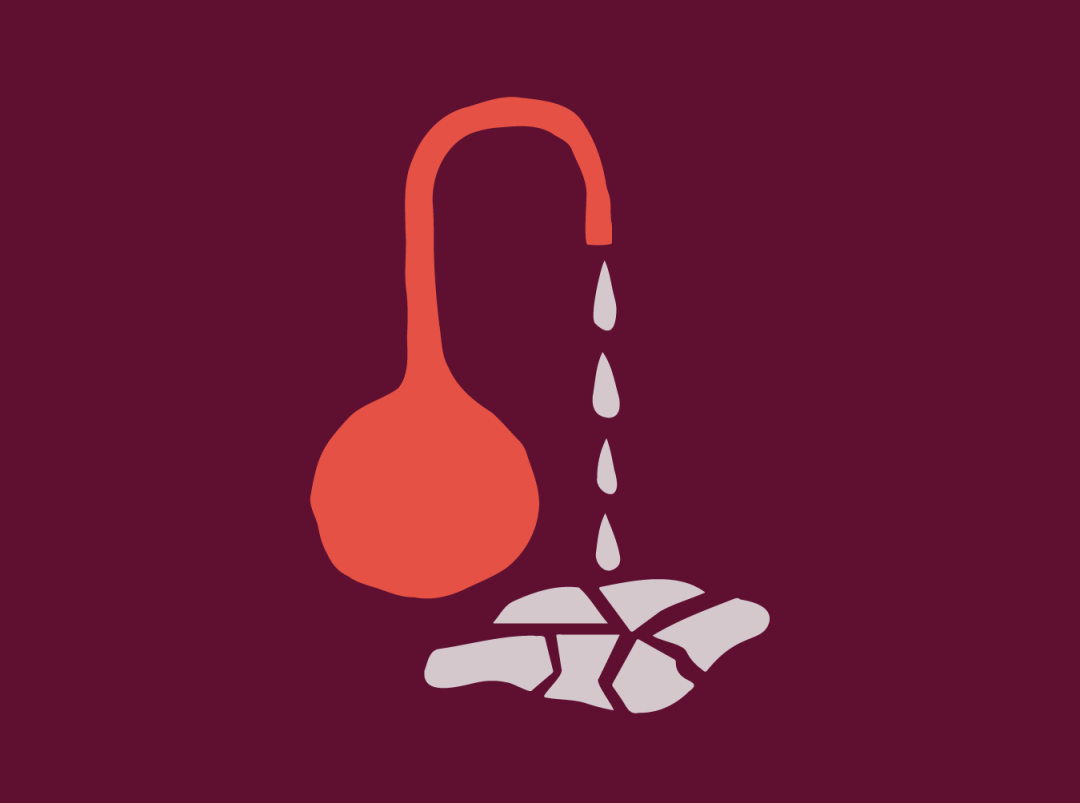#explainer
Everything You Need to Know About Incontinence After Childbirth
health
·5 min read

by Team Thinx | 04/05/2023
After you give birth, your baby immediately becomes priority number one. All of your focus and energy involves feeding them, changing their diapers, and copiously tracking all of the above (and how long until their next nap — and yours). Rinse and repeat.
When they gift you an award-winning gummy smile or sneeze in that adorable way that only babies can, you can’t help but laugh. But if you accidentally pee a little mid-giggle, it can feel slightly alarming.
If this happens to you, don’t panic — you may have what’s called postpartum incontinence, a condition that approximately 33% of women experience after childbirth. While it usually dissipates with time, you probably wouldn’t mind kicking it to the curb a little sooner.
With a better understanding of incontinence after childbirth, you can take charge and manage the condition so you’re able to focus on more exciting aspects of life, like that new little babe.
what is postpartum urinary incontinence?
In addition to other postpartum symptoms like constipation, bleeding, and the delicate care of vaginal tears, another unexpected symptom you become all too familiar with is urinary incontinence.
We get it — after the morning sickness, back pain, and countless other symptoms you may have experienced throughout your pregnancy, you probably want no part in any of this. But these things are common and natural — so your uterus and bladder may not have received the memo.
Postpartum urinary incontinence occurs when you experience any degree of involuntary urination. It can be as small as leaking a few drops when you laugh, sneeze, or cough. It could also be more pronounced bladder leakage. Some people, feeling the sudden urge to pee, make a mad dash to the restroom, but their bladder betrays them seconds before they drop their undies.
what causes postpartum incontinence?
After you’ve gone through vaginal childbirth or a caesarean section, you can confidently claim that giving birth is not a simple task. While everyone’s experience is unique, every person who’s had a baby via vaginal birth or cesarean section has one thing in common: delivery can lead to weak pelvic floor muscles. This sometimes makes it more difficult to control the flow of urine.
There are multiple reasons you may find it difficult to have full bladder control during those first few weeks postpartum and beyond, such as:
Stress incontinence — This type of incontinence occurs when you put strain or pressure on your bladder (aka coughing or sneezing). And if you have weak pelvic muscles, they may struggle to keep your urethra closed while it's at rest. Doing regular pelvic floor exercises might help lessen the effect of stress incontinence.
Organ movement — Sometimes your bladder or urethra temporarily move from their usual positions during childbirth.
An episiotomy — If the doctor thinks you’re at risk of tearing, they may make a small surgical cut between your vagina and anus so the baby has an easier time journeying into the world. Although this is more likely to result in fecal incontinence, it can cause involuntary urination as well.
Delivery accompanied by forceps — If the doctor used forceps or a vacuum to help deliver the baby, it could cause temporary damage to your pelvic floor muscles, making it harder to control your bladder.
how long does postpartum incontinence last?
Thankfully, there is good news for those experiencing postpartum incontinence: after childbirth, your pelvic floor muscles begin to repair themselves. As they heal, you’re likely to experience less incontinence. Many people find that it dissipates a few weeks after childbirth. Others have it for months or longer, depending on how quickly their pelvic floors heal.
how to manage postpartum urinary incontinence: tips and tricks
Although there’s no cut-and-dry answer as to how long you may experience postpartum incontinence after childbirth, there are steps you can take to speed up your recovery. With these four tips and a touch of perseverance, you’ll laugh with abandon (and without any urine leakage) before you know it:
#1: remember that kegels are your friend
Wondering how to exercise pelvic floor muscles? You may have performed kegels during pregnancy to strengthen your pelvic floor. Perhaps you’ve been doing them for years to improve your sexual experiences (hello, better orgasms).
Whatever the reason, you may be familiar with kegels and the many reasons they can be an ally. It’s one of the best exercises for postpartum urinary incontinence. But whether you’re a pro or this is your first time hearing about them, we have good news. Everyone can do them — no matter where you are.
Sitting in your car at a red light? Yep. Watching your favorite reality show on your couch. You bet.
Think about a time when you were peeing and had to pause mid-flow. You may not have known it then, but you were using your pelvic floor muscles to stop the pee! Of course, you don’t have to do kegels while you’re peeing (nor should you, as it could lead to urinary tract infections).
But if you’re trying to determine where your pelvic floor muscles are and how they feel when they contract, figuring it out while you’re peeing is a good place to start. Just remember that once you learn how to do kegels properly, it’s healthiest to do them when you’re not mid-stream.
Here’s how you complete a kegel:
Step 1: Locate the pelvic floor muscles. If you’re trying to find them via the “stop the pee” method, you’ll know you’re using the right muscles when you notice the tissue in your vagina and anus tighten and lift upward. Voila — your pelvic floor muscles.
Step 2: Perfect your kegels. Now that you know where they are and how they feel when you’re contracting them, you can do them anywhere you want. While practicing, imagine you’re sitting on a small marble and lifting it with only your pelvic muscles. You can start with a three-second hold and gradually increase to longer bursts of up to ten seconds at a time.
Step 3: Focus on your pelvic muscles. It can be easy to forget which muscles you’re trying to utilize. Focus on using your pelvic floor rather than your abdomen or buttocks.
Step 4: Repetition is key. Complete three sets of 10 to 15 kegels daily to improve your postpartum incontinence.
#2: train your bladder
Although you may have potty trained your puppy, you probably never entertained the idea of training your own bladder. Luckily, this is much easier than training your puppy and will likely result in way fewer accidents.
You can use these simple steps to help get your bladder back on track:
Step 1: Note your pee pattern. For the first few days, write down the time it is when you pee or have small bladder leaks.
Step 2: Do the math. After two days, calculate the average amount of time between each urination.
Step 3: Choose an interval. For example, if you’re peeing every hour and fifteen minutes, try expanding that interval by 15 minutes. On the following day, try emptying your bladder every hour and a half.
Step 4: Be consistent. On day three, empty your bladder as soon as you wake up. Then wait an hour and a half until you pee again. Even if you feel the urge earlier than that, do your best to be consistent with your chosen interval.
Step 5: Increase your interval. Once you become comfortable waiting an hour and a half between potty breaks (or however long your interval is), add another 15 minutes to it. Once you train your bladder to wait longer between urinations, you may be less likely to notice any major or minor accidents.
#3: avoid certain foods and drinks
Certain beverages and foods can have a habit of irritating your already squeamish bladder. If you’re a coffee connoisseur, this one might hurt your caffeinated heart a bit, because coffee is one of the culprits that can add to bladder leaks.
In addition to coffee, tea, and carbonated drinks (yes, even the ones without caffeine), here are some other food and drinks to steer clear of while you’re working on improving your incontinence:
Alcohol
Acidic fruits like oranges, grapefruits, and lemons
Spicy foods
Tomato-based products like tomato sauce and tomato paste
Chocolate
While you don’t need to quit your favorite items cold turkey, keeping them at bay while you’re experiencing leaks might make your bladder feel more at ease and your leaks less frequent. And once you’re incontinence-free, you can wholeheartedly add them back into your diet.
#4: invest in the right undies
Even after incorporating all of the tips into your daily life, you may experience slight incontinence until your pelvic floor muscles have fully healed. So when the going gets tough, the tough get… incontinence underwear, one of the best incontinence products available today.
That’s right. You can replace bulky panty liners with absorbent underwear made just for bladder leaks. They hold up to eight teaspoons of liquid, they keep you dry, and they’re reusable. What’s not to love?
take incontinence into your own hands with Thinx for All Leaks
When you bring your newborn home from the hospital, you want to focus your energies on their needs, not your unexpected bladder leaks. But since your self-care is just as important, give yourself a gift that keeps on giving wash after wash.
We created Thinx for All Leaks bladder leak underwear just for you that come in a variety of styles, from Hi-Waist to Thong, and they hold as much liquid as six pantyliners. You can do your part to help save the planet while saving yourself the hassle of changing them after every leak.
Browse our collection and find your perfect pair of bladder leak undies today.
At Thinx, we strive to provide our readers with the most up-to-date, objective, and research-based information. Our content is crafted by experienced contributors who ground their work in research and data. All information has been fact-checked and extensively reviewed by our team of medical professionals to ensure content is accurate. Articles contain trusted third-party sources that are either directly linked within the text or listed at the bottom to lead readers to the original source.
sources:
NIH. Prevalence of postpartum urinary incontinence: a systematic review.
https://pubmed.ncbi.nlm.nih.gov/21050146/
Colorado Women’s Health. Incontinence After Childbirth. https://urogyn.coloradowomenshealth.com/conditions/bladder/incontinence-after-childbirth.html
Mayo Clinic. Urinary Incontinence. https://www.mayoclinic.org/diseases-conditions/urinary-incontinence/symptoms-causes/syc-20352808
Colorado Women’s Health. How and Why to Do Kegels. https://urogyn.coloradowomenshealth.com/tips/kegel-corner/teach-me-how-to-kegel.html
Mayo Clinic. Kegel Exercises: A How To Guide for Women. https://www.mayoclinic.org/healthy-lifestyle/womens-health/in-depth/kegel-exercises/art-20045283
Harvard Health Publishing. Training Your Bladder. https://www.health.harvard.edu/healthbeat/training-your-bladder
Mayo Clinic. Bladder Control: Lifestyle Strategies Ease Problems. https://www.mayoclinic.org/diseases-conditions/urinary-incontinence/in-depth/bladder-control-problem/art-20046597
by Team Thinx


